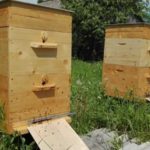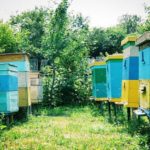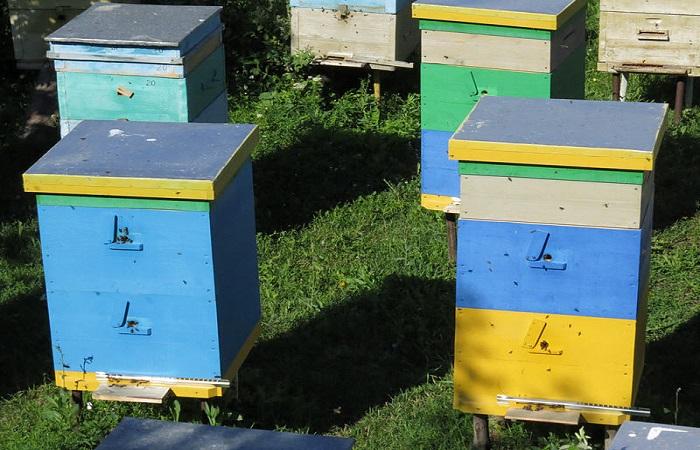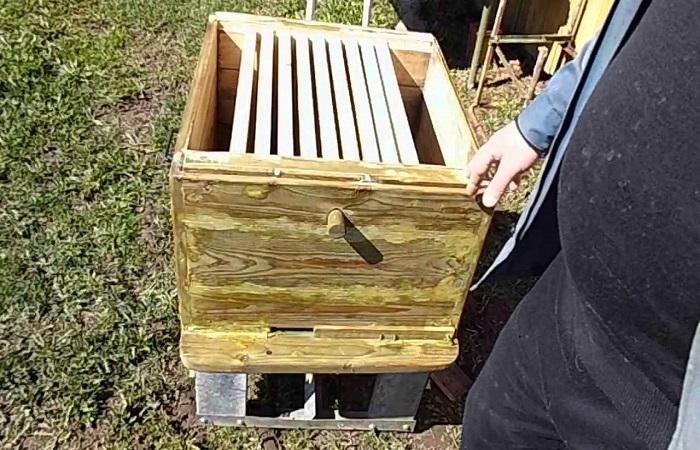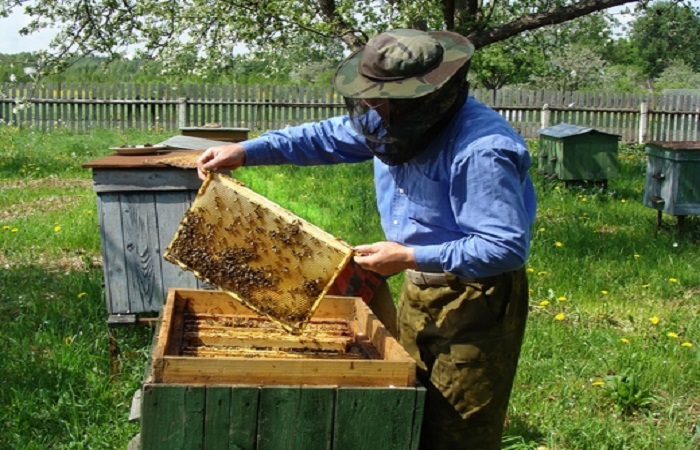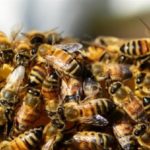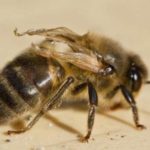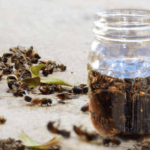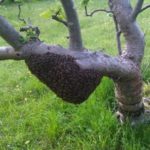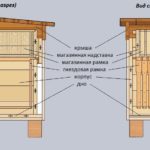Now the double-hull method of keeping bees in a dadan has many advantages. In this case, a hive is used that includes 2 compartments or bodies. The lower part has a non-removable bottom and roof. The second body has no bottom. In this case, it is placed on top of the first structure. This allows you to double the volume of the hive. This method of bee breeding has its pros and cons.
Features and advantages of the method
A standard two-frame hive with 12 frames has the following design features:
- Single walls.The wall thickness is about 45 millimeters.
- Flat roof. It is equipped with several ventilation ducts and landing boards.
- Liner. It is required for laying the insulating layer in the hive.
- Removable bottom. This makes it easier to swap housings.
- Flight boards of the lower and upper entrances. They are placed vertically close to the walls, closing the entrances.
- Additional entrances on top. 1 piece is used for each body. They are round holes with a diameter of 25 millimeters. Arrival slats are located under the entrances.
The main advantages of this design include the following:
- Possibility of using a second uterus. To do this, the two tiers of the hive are separated. At the same time, 2 queens allow you to quickly increase the strength of the bee colony. Before the main honey collection, the septum is pulled out.
- Bee control. This is ensured by a separating grid. Thanks to this, the beekeeper always knows where the queen is located. In addition, he can select frames with young brood. The beekeeper is also able to force insects to collect honey in specific frames. This may be required, for example, for wintering.
- Possibility of installing a nucleus with an additional uterus. This is required for small layering. This technique provides a more comfortable winter. In this case, the hive bodies need to be separated.
- Reducing the risk of bees swarming. This is due to the large amount of free space in the hive.
- Possibility of constructing double-hulled hives from simple Dadanov designs. To do this, simply make another tier.
Main disadvantages
The main disadvantage of the design is its impressive mass. The structure weighs 45-50 kilograms, including the frames from which honey will be pumped out.The superstructure will have to be moved several times during honey collection. This causes certain physical difficulties for beekeepers.
Content technology
To accurately determine the optimal time for the construction of this type of hive, it is worth focusing on the general condition of the bee colony and the estimated period for the appearance of the honeybee. To breed bees in two buildings with 12 frames, it is worth installing another tier. This must be done before the swarming stage begins.
For a strong family, after the winter period ends, the superstructure should be installed in mid-spring. But this is done only after the frames located in the lower tier are completely filled. This will help avoid swarming and achieve more active functioning of the bee colony.
A weak family will need some time to gain strength. After this, you can expand the bee nest. This work is carried out about a month before the start of flowering of key honey plants. During this period, the hive should be fully filled with honeycombs. Once meta collection begins, it is important to have combs without offspring. They should be located on the second floor of the hive. These cells will be filled with honey.
A simplified way to keep bees in a double-hull hive
This method involves placing two frames on top of the hive. In this case, you need to select offspring of different ages and move them to the second floor of the hive. On the edge you need to place honey and bee bread. The space that appears in the lower tier needs to be replaced with honeycombs with foundation.
At the initial stage, several frames that are located at the top of the hive need to be separated with a board. It is worth placing the foundation in the same place. Thus, the queen moves to the required place and begins laying eggs. She uses free cells for this purpose.Worker bees that build new honeycombs on the second floor are not susceptible to swarming.
Layering formation
In areas where the main honey flow begins late, keeping bees in double-hulled dadan hives cannot protect them from swarming. In such a situation, many idlers appear in bee colonies, and subsequent expansion of the nest is considered impossible. The bees' working mood disappears, and they begin to prepare for swarming. In this case, queen cells are formed on the frames.
Merging the offspring with the main family
Keeping bees in double-hull hives with a dividing grid makes it possible to use two queens at once. This will help strengthen the family and avoid swarming. Layering should only be done when the hive is overcrowded. Also, a similar need arises with late honey collection.
It is recommended to connect the layering with the bee colony immediately before the start of honey collection. To do this, it is worth separating the mature uterus, removing the partition and grouping the frames in a new way. At the bottom of a double-hull hive there should be open offspring. In this case, it is recommended to place printed brood on top. During the same period, stores for honey collection are installed.
Wintering
In order for bees to survive the winter normally, they need to create suitable conditions. To do this, it is important to provide the insects with adequate nutrition. When keeping bees in double-hull hives for the winter, they should be left without an upper floor.


